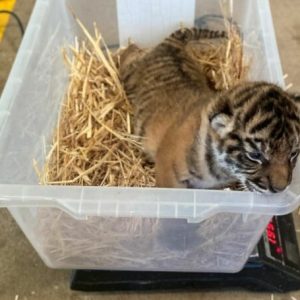Adopt a Baby Panda Online
Delve into the enchanting realm of the charismatic panda, renowned as the cat-footed bear and native to the enchanting landscapes of China. The historical narrative of pandas takes a poignant turn, tracing back to the 1970s when these gentle creatures faced the harrowing consequence of being hunted for their prized fur. The 1970s marked a pivotal era in the conservation efforts for pandas, witnessing a surge in popularity and gradual population growth, currently standing at 239 pandas held in captivity across China and 27 other countries.
Providing a Habitat Fit for Royalty:
Owning a panda demands a habitat that mirrors their natural surroundings, ensuring they flourish even in captivity. With an affinity for climbing trees, it becomes imperative to create a captive environment rich in foliage. Pandas also seek solace in hiding spots while they sleep, distinct from the hibernation patterns of other bears. Incorporating rock structures alongside the abundance of trees caters to the panda’s need for secluded resting spaces. Creating a haven that mimics the Chinese jungle is not just a luxury but an essential aspect of their well-being.
Navigating the Culinary Preferences of Pandas:
The panda’s diet distinguishes them from their bear counterparts, with an inclination towards herbivory. Bamboo stands as the cornerstone of their diet, constituting a remarkable 80%. While pandas in the wild thrive on this primary food source, those in captivity exhibit a nuanced diet with the inclusion of fruits and vegetables. Providing a captive panda with a balanced and nutrient-rich diet is crucial for their overall health and well-being.
Diligent Veterinary Care for Endangered Royalty:
Given their endangered status, regular veterinary care is paramount for the well-being of captive pandas. Routine check-ups by veterinarians ensure the preservation of their health and early detection of any potential issues. A proactive approach to healthcare becomes imperative in safeguarding these majestic creatures from ailments and ensuring their longevity.
Exploring the Tapestry of Panda Subspecies:
The enchanting world of pandas unfolds with various subspecies, adding depth to their captivating narrative. While the giant panda, often misconstrued as a subspecies, is a charismatic icon, other subspecies grace the Chinese landscape. The nominate subspecies, akin to the giant panda, is a resident of the Chinese region of Sichuan, boasting the same distinctive black and white coat.
Another fascinating subspecies, the Qinling panda, made its debut in the 1960s and earned its classification in 2006. Distinguished by its smaller skull structure, brown tones, and smaller stature, the Qinling panda adds a unique hue to the tapestry of panda diversity.
A Call for Responsible Ownership:
The desire to share your life with these captivating creatures carries the weight of responsibility. Owning a panda necessitates an in-depth understanding of their needs, encompassing habitat requirements, dietary considerations, and proactive healthcare measures. Education emerges as a pivotal aspect, ensuring that potential panda owners are well-equipped to provide the optimal care that these majestic beings deserve.
Embark on an extraordinary journey of compassion and care by adopting a baby panda online, contributing to the conservation and well-being of this endangered species. Contact Us to explore the possibility of welcoming a baby panda into your life, and embark on a journey of understanding, responsibility, and admiration for these captivating creatures.




